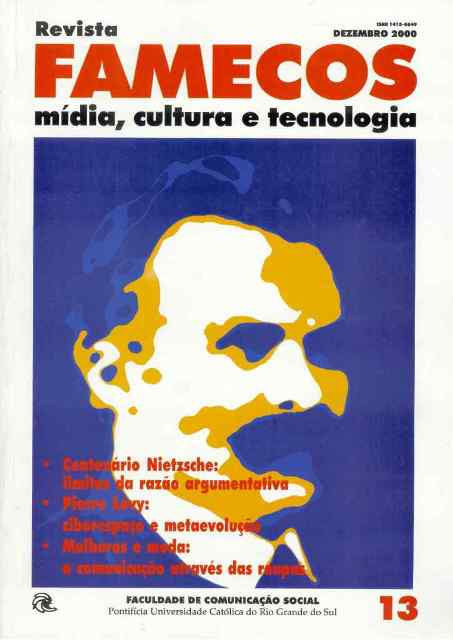Graphic Design & Postmodernity
DOI:
https://doi.org/10.15448/1980-3729.2000.13.3088Keywords:
Communication, Graphic design, PostmodernismAbstract
This article presents a brief summay on the origins of the modernist aesthetics in the visual arts and in graphic design in order to sketch, afterwards, a short historical account of postmodern design. It is pointed out then that there is a recurrent postmodern design style which exploits a visual aesthetic which resembles that of palimpsests, for it uses several overlapping, transparent layers of heterogeneous signs in its layouts. The goal of that style seems to be to draw the viewer into a hermeneutic game of unlimited possibilities of interpretation which precludes the possibility of “easy” readings.Downloads
References
CAUDURO, F V Semiotics and Design: For an intertextualized dialogical praxis’, PhD thesis, Department of Typography & Graphic Communication, University of Reading, 1990
______, F V Desconstrução e Tipografia digital’, in Revista Arcos, vol.1, nº1, Rio de Janeiro: ESDI, 23-31, 1998
DERRIDA, J Of Grammatology, traduzido por Gayatri Spivak, Baltimore, Maryland: The John Hopkins University Press, 1967
______, J Writing and Difference, traduzido por Alan Bass, London: Routledge & Kegan Paul, 1967
______, J Margins of Philosophy, traduzido por Alan Bass, Chicago: Chicago University Press, 1972
FREUD, S On Metapsychology: The Theory of Psychoanalysis. Beyond the Pleasure Principle, the Ego and the Id, and other works, The Pelican Freud Library, Vol 11, trad. do alemão sob a supervisão de James Strachey, volume compilado e editado por Angela Richards, London: Penguin Books, 1925
HARLAND, R Superstructuralism, New Accents, ed.THawkes, London: Methuen, 1987
HARVEY, D Condição pós-moderna, 7a. edição, trad. de Adail U. Sobral & Maria S. Gonçalves, São Paulo: Edições Loyola, 1989
JENKS, C What is Post-Modernism?, 2a. ed., New York: St.Martin’s Press, 1987
KEEP, C & MCLAUUGHLIN, T “The Mystic Writing Pad”, in The Electronic Labyrinth, Disponível em: http://jefferson.village.virginia.edu/elab/hfl0257.html, 1995
______, C & MCLAUUGHLIN, T “Palimpsest”, in The Electronic Labyrinth, http://jefferson.village.virginia.edu/elab/hfl0243.html, 1995
LEVICK, M & Young, S The Big Picture: Murals of Los Angeles, London: Thames and Hudson, 1998
LIPPARD, L R Pop Art (with contributions by Lawrence Alloway, Nancy Marmer and Nicolas Cals), New York: Frederick A. Praeger, 1966
LOVEJOY, M Postmodern currents: art and artists in the age of electronic media, 2nd edition, Upper Saddle River, New Jersey: Prentice Hall, 1997
LUPTON, Ellen, & MILLER, J. Abbott Design Writing Research: Writing on Graphic Design, New York: Princeton Architectural Press, 1996
MARTINS, Wilson A palavra escrita: História do livro, da imprensa e da biblioteca. Com um capítulo referente à propriedade literária, 2a. edição, Vol. 49, São Paulo: Editora Ática, 1996
MEGGS, Philip B. A History of Graphic Design, 2a. ed., New York: Van Nostrand Reinhold, 1992
MORAIS, Frederico Arte Moderna, Arte Pós-moderna, cartaz,4a. ed., Rio de Janeiro, 1977
QUINION, M B “Palimpsest”, in Weird Words, http://quinion.com/words/weirdwords/ww-pal1.htm, 1998
Downloads
Published
How to Cite
Issue
Section
License
Copyright
The submission of originals to Revista Famecos implies the transfer by the authors of the right for publication. Authors retain copyright and grant the journal right of first publication. If the authors wish to include the same data into another publication, they must cite Revista Famecos as the site of original publication.
Creative Commons License
Except where otherwise specified, material published in this journal is licensed under a Creative Commons Attribution 4.0 International license, which allows unrestricted use, distribution and reproduction in any medium, provided the original publication is correctly cited.






